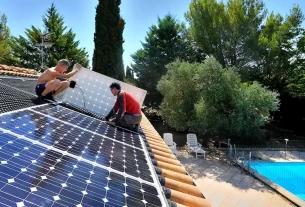Let’s face it—pools are a luxury, but they don’t have to be an environmental burden. With the right practices, you can keep your pool sparkling while minimizing water waste, chemical use, and energy consumption. Here’s the deal: eco-friendly pool maintenance isn’t just good for the planet—it’s often easier on your wallet too.
Why Go Green with Pool Care?
Traditional pool maintenance relies heavily on chlorine, excessive water refills, and energy-guzzling pumps. But honestly? There’s a better way. Sustainable practices reduce:
- Chemical exposure (for you and wildlife)
- Water waste (drought-prone areas, take note)
- Energy bills (pumps alone account for ~20% of home energy use)
1. Smart Water Conservation
Pools lose water to evaporation, backwashing, and splashing—but you can slash waste with these tricks:
Cover It Up
A pool cover isn’t just for leaves. It cuts evaporation by 90%, saving thousands of gallons annually. Solar covers? Even better—they trap heat while reducing water loss.
Fix Leaks Promptly
A tiny leak can waste 500+ gallons a month. Listen for pump hisses, check wet spots, or use the bucket test (mark water levels with the pump on/off).
Reuse Backwash Water
Instead of dumping filter backwash, redirect it to irrigate salt-tolerant plants (just avoid chlorine-heavy water). Or—better yet—switch to a cartridge filter that doesn’t need backwashing.
2. Chemical Alternatives
Chlorine isn’t the only option. Here’s how to cut back without sacrificing cleanliness:
Saltwater Systems
Saltwater pools use electrolysis to generate chlorine naturally—at lower concentrations. Less irritation, fewer chemical purchases, and no chlorine smell. Win-win.
Mineral Purifiers
Copper and silver ion systems reduce chlorine needs by 50–80%. They’re gentler on skin and eyes, though you’ll still need a chlorine residual.
Ozone or UV Systems
UV light or ozone generators zap bacteria, letting you use minimal chemicals. They’re pricey upfront but pay off long-term.
3. Energy-Efficient Upgrades
Pools suck energy—but not if you’re smart about it:
- Variable-speed pumps: Use 80% less energy than single-speed models. They adjust flow to match needs (like filtering vs. running waterfalls).
- LED pool lights: Last longer and use 75% less energy than incandescents.
- Solar heaters: Harness free sun power instead of gas/electric heaters.
4. Natural Pool Cleaning
Who says you need harsh chemicals to fight algae? Try these nature-inspired hacks:
Enzyme Cleaners
These break down oils and organic gunk, reducing chlorine demand. Think of them as probiotics for your pool.
Baking Soda & Vinegar
For spot-cleaning tiles or balancing pH, household staples work wonders. Just avoid mixing them directly—unless you want a DIY volcano.
Robotic Cleaners
Energy-efficient bots scrub surfaces without extra chemicals. Look for ENERGY STAR-rated models.
5. Landscaping for Sustainability
Your pool’s surroundings matter. Plant windbreaks (like shrubs or hedges) to cut evaporation. Choose drought-tolerant plants that won’t shed leaves into the water. And hey—skip the grass. Artificial turf or gravel reduces runoff and chemical-laden overspray.
The Bottom Line
Eco-friendly pool care isn’t about perfection—it’s about progress. Start with one change: maybe a cover, or switching to a variable-speed pump. Small steps add up. After all, the cleanest pools shouldn’t come at the cost of a dirty planet.




